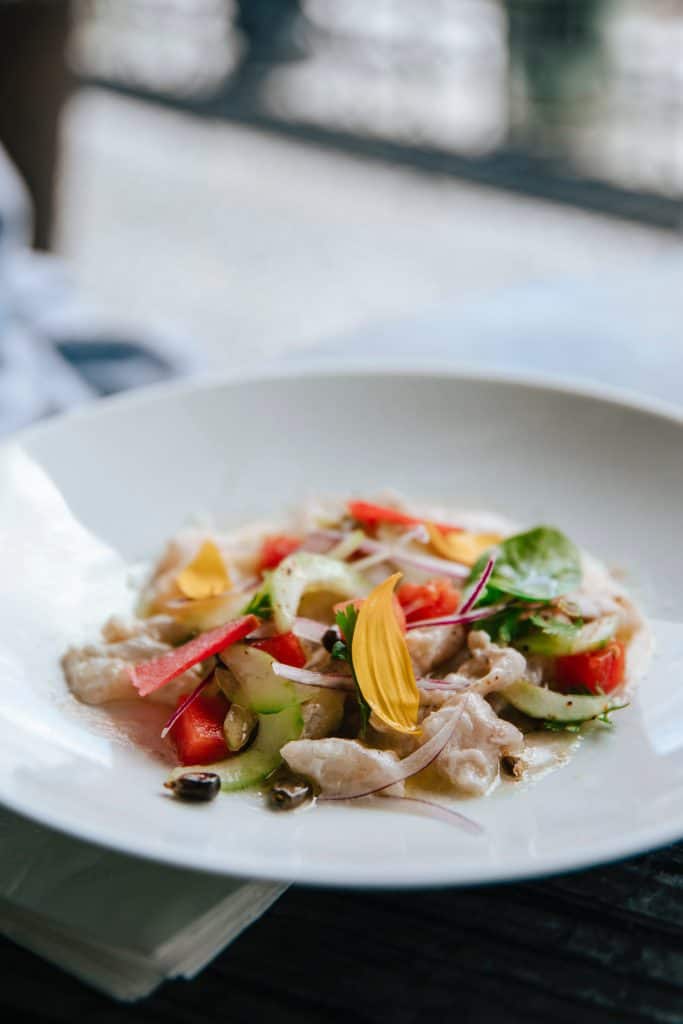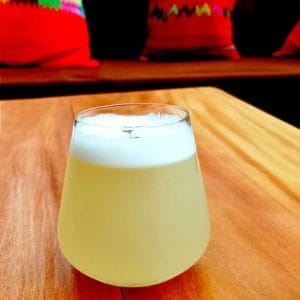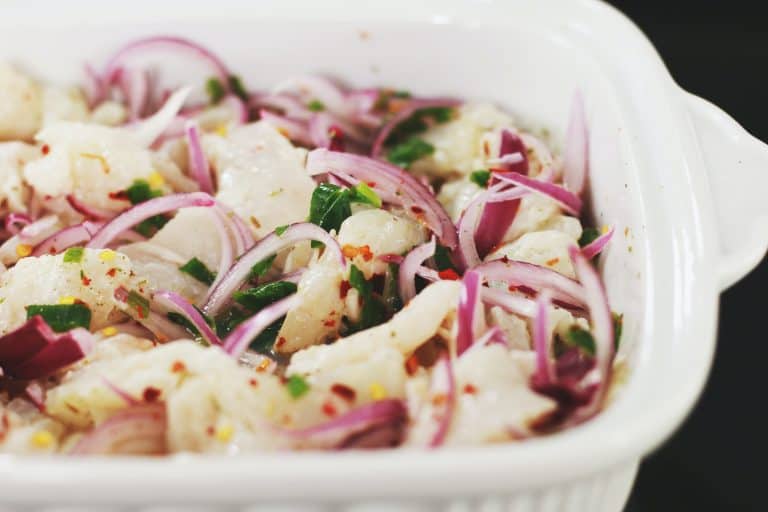Peruvian cuisine is known for its complex flavours and unique ingredients, and one of its most iconic dishes is ceviche. This refreshing seafood dish is a favourite across the country and has become increasingly popular worldwide. But not all ceviche is created equal – Peru’s diverse geography and culinary traditions have given rise to a wide variety of ceviche styles, each with its own distinct flavour and character. In this article, we’ll take a deep dive into the world of Peruvian ceviche and explore its many different types, from classic lime-marinated fish to unusual and adventurous variations.
Ceviche is believed to have originated in Peru thousands of years ago, where it was first prepared by the Moche people, a pre-Columbian civilization that thrived along the northern coast of Peru. The Moche would marinate freshly caught fish in chicha (a fermented corn beverage), salt, and aji peppers, a traditional Peruvian spice that gives the dish its signature heat. Over time, ceviche evolved and spread throughout Peru, incorporating new ingredients and techniques.
Today, ceviche is enjoyed throughout Peru and has become a symbol of the country’s rich culinary heritage. While there are many regional variations of ceviche, Peruvian ceviche is typically made with fresh raw fish or seafood, such as sea bass or shrimp, which is marinated in lime or lemon juice, and seasoned with chili peppers, salt, and other herbs and spices. The dish is often served with corn, sweet potato, and aji amarillo, a spicy yellow pepper paste.
Peruvians are rightly proud of their beloved dish, and they celebrate ceviche with a national holiday called “Día del Ceviche” on June 28th each year. Ceviche has also gained popularity around the world, and many people have come to love this tangy and refreshing seafood dish.
One of the reasons why ceviche has become so popular, besides its taste and variety, is because of its health benefits. The dish is low in fat and high in protein, making it a great option for those looking to maintain a healthy diet. Additionally, the high levels of vitamin C found in the lime juice used to marinate the fish can help boost the immune system and improve skin health. With its delicious taste and numerous health benefits, it’s no wonder that ceviche has become a staple dish in Peru and beyond.
At its core, Peruvian ceviche is made by marinating raw fish or seafood in lime juice and seasoning it with a variety of spices, herbs, and vegetables. It is a simple dish made of fresh fish, lime juice, salt, and chili peppers. The fish is typically cut into small cubes or thin slices, then marinated in a mixture of freshly squeezed lime juice and salt, which “cooks” the fish by denaturing its proteins. Aji peppers or other chili peppers are added to the mix to provide heat and flavor.
Other common ingredients include onions, garlic, cilantro, and corn. In Peru, ceviche is often served with sweet potato and corn on the cob.
We’ll explore the basic ingredients of Peruvian ceviche, how to make it, and some variations that you can try.
The most important ingredient in Peruvian ceviche is fresh fish or seafood. Some of the most popular choices are sea bass, flounder, halibut, squid, and shrimp. It’s important to use the freshest fish you can find, as the acidity of the lime juice will not only cook the fish but also intensify any off flavors. When selecting fish, look for firm, white-fleshed fish that is free of any fishy odour.
In addition to the fish, other key ingredients in Peruvian ceviche include lime juice, red onion, garlic, cilantro, and chili peppers. The lime juice is what cooks the fish and gives it its characteristic tangy flavor. The red onion adds a sweet, crunchy texture to the ceviche, while garlic and cilantro give it a savory depth of flavor. Chili peppers provide the heat, but the amount used can be adjusted to suit your taste.
Here’s a classic recipe for Peruvian ceviche:

Peru’s diverse regions have given rise to many different styles of ceviche, each with its own unique twist. Along the coast, ceviche is often made with white fish or shellfish, while in the Andes, it may include [trout ceviche] or other freshwater fish. In the Amazon, ceviche can incorporate exotic ingredients like yucca and plantains, while in the highlands, it may be served with potatoes and corn.
Some popular regional variations of Peruvian ceviche include:
Another popular variation of Peruvian ceviche is the Northern-style ceviche, which is typically made with sea bass and marinated in lime juice, garlic, and chili peppers. It is often served with sweet potato, corn, and cancha, a type of toasted corn. This style of ceviche is known for its bold and spicy flavor and is a favourite among locals and tourists alike.
Looking to take your ceviche game to the next level? Here are some unusual and adventurous ceviche ingredients to experiment with:
Choosing the right fish is essential to making great ceviche, as not all fish are suitable for raw preparation. The best fish for ceviche should be fresh, firm, and mild tasting, with a texture that can hold up to marinating in the lime juice. Some popular fish used in Peruvian ceviche include sea bass, snapper, tilapia, halibut, and mackerel. If you’re unsure which fish to use, ask your local fishmonger for advice.

No discussion of ceviche is complete without mentioning its perfect companion: the pisco sour. This classic Peruvian cocktail is made from pisco, a grape brandy, and citrus juice, often with a touch of egg white for frothiness. The tart and slightly sweet flavours of the pisco sour complement the tangy, citrusy flavors of ceviche perfectly, making for a delightful and refreshing meal. If you’re feeling adventurous, try experimenting with other pisco-based cocktails!
Not only is ceviche delicious, but it’s also a nutritious and healthy meal. The fresh fish provides a rich source of protein, while the lime juice adds vitamin C and other antioxidants. Chili peppers and other spices used in ceviche have been found to have anti-inflammatory and metabolism-boosting properties, and the dish is naturally low in fat and calories. Just be sure to choose fresh, high-quality ingredients and to keep your ceviche refrigerated before serving to avoid any potential foodborne illness.

Another recipe very demanded is the shrimp ceviche. Here we’ll provide a simple and delicious recipe for making shrimp ceviche, so you can enjoy this tasty dish anytime you want.
Ingredients:
1 lb raw shrimp, peeled and deveined
1/2 red onion, thinly sliced
1/2 cup fresh lime juice
1/4 cup fresh lemon juice
1 jalapeno pepper, seeded and minced
1/4 cup chopped fresh cilantro
1/4 tsp salt
1/4 tsp black pepper
Instructions:
Cut the shrimp into bite-size pieces and place them in a large bowl. Add the sliced red onion, minced jalapeno pepper, and chopped cilantro to the bowl. Pour the lime juice and lemon juice over the shrimp mixture and stir well to combine. Season with salt and black pepper and stir again. Cover the bowl with plastic wrap and refrigerate for at least 30 minutes or up to 2 hours to allow the shrimp to “cook” in the citrus juice.
Once the shrimp is fully cooked, remove from the refrigerator and stir again before serving. Serve the shrimp ceviche in bowls or on plates, garnished with additional cilantro leaves, if desired.
Here are some expert tips to help you make the best ceviche possible:
With so many different types of Peruvian ceviche to explore and enjoy, there’s never been a better time to dive into this delicious and exciting cuisine. Whether you stick to the classic lime-marinated style or try something new and adventurous, one thing is for sure: Peruvian ceviche is a culinary treasure that’s not to be missed! At Las Qolqas Eco Resort, you can taste the typical Andean ceviche style made with trout, at the restaurant El Pututu.